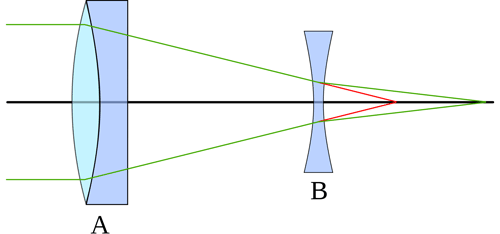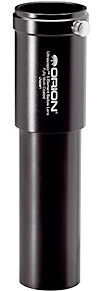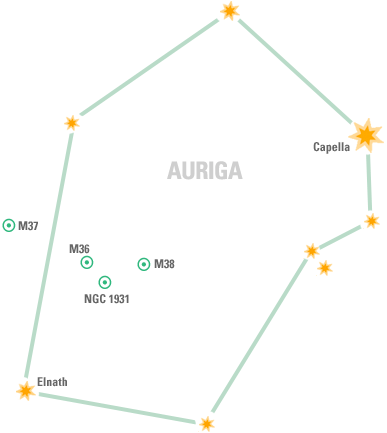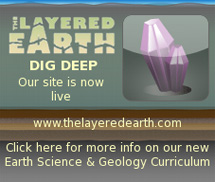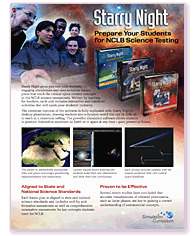 |
||||||||||||||||||||||||||||||||||||||||||||||||||||||||||||||||||||||||||||||||||||||||||||||||||||||||||||||||||||
|
If you have trouble viewing this newsletter, click here. Welcome again to our monthly newsletter with features on exciting celestial events, product reviews, tips & tricks, and a monthly sky calendar. We hope you enjoy it!
Mercury is the closest planet to the Sun, never straying more than 28 degrees from it. Because of this, it is difficult to see much detail on this planet from the surface of the Earth. Early observers in the 1800’s used this meagre information to deduce a rotation rate of 88 days. This would make one side of Mercury always face the Sun while the other side would be in constant darkness. It wasn’t until 1965 that it was determined that Mercury’s actual rotation rate was 58.646 days. Now this turns out to be exactly 2/3 of the 87.969 day orbital period so Mercury rotates 1.5 times in one “Mercury” year. This gives rise to a rather strange phenomenon — a solar day on Mercury is longer than a year!
The left graphic shows sunrise on Mercury on January 5 and the right graphic shows the next sunrise on June 29 — that’s 176 days, or twice the 88 day orbital period! To see another sunrise on Mercury you would have to wait 2 Mercury years! Furthermore, “daytime” and “nighttime” on Mercury would each last about one Mercury year. This difference between the rotation period and the solar day is true for all planets including the Earth. But because the Earth rotates much faster (and is farther away from the Sun) than Mercury — 23h 56 m — its solar day is only 4 m longer at 24 h. For the rapidly rotating Jupiter the difference is only a few seconds. But that’s not all. Because of its highly eccentric orbit, Mercury’s orbital velocity increases significantly as it approaches perihelion. A few days before perihelion the angular orbital velocity equals Mercury’s angular rotational velocity. As a result, the rising Sun appears to stop in Mercury’s sky as time progresses. Then, as the orbital velocity increases, the Sun actually reverses its path in the sky before resuming its normal westward path. If you are at the right place at the right time you can actually witness a double sunrise! You can explore Mercury’s strange days yourself by opening the file <Sun_Path.snf> in your Starry Night program. Let time Run Forward and watch the Sun’s antics as it rises above Mercury’s surface. Herb Koller
Barlow got the idea to introduce a negative lens just in front of the eyepiece of a telescope. This increased the effective focal length of the telescope, or, to put it differently, the magnification of the eyepiece. Barlow used a single double concave lens. Because this introduces chromatic aberration, most modern Barlow lenses use two or more elements to make them achromatic (color free).
Most Barlow lenses are "universal" and can be used with any telescope or eyepiece. So-called "long Barlows" use a fairly long focal length lens and are mainly for reflectors. Because of their long tubes, “long Barlows” don’t work well if they need to be fitted into diagonals, commonly used on refractors and catadioptrics. To accommodate these scopes, “short Barlows” were developed using a shorter focal length lens. This places greater optical strain on the system. Here’s a side-by-side comparison of the two sizes: Since a Barlow lens will be used with a number of different eyepieces over a long period of time, it's worth buying a good quality one. The best of the "short Barlows" is the Orion Shorty Plus (show above on the left). The best "long Barlows" are the Orion Ultrascopic (shown above on the right) and the TeleVue 2x. Avoid 3x Barlows and “zoom” Barlows, as any 2x Barlow can easily give more magnification by increasing the distance from Barlow to eyepiece (slide the eyepiece out a bit). A popular trick for increasing the magnification of a 2x short Barlow in a refractor or catadioptric is to place the Barlow between the diagonal and the telescope, rather than between the eyepiece and the diagonal. In a different league entirely are Tele Vue's Powermates. These work similar to a Barlow lens but have a more sophisticated optical system which eliminates some of the problems with ordinary Barlows. A Barlow lens is often recommended as an early purchase for new telescope owners because it instantly doubles the beginner’s small eyepiece collection. Strangely enough, most experienced amateur astronomers rarely use Barlows, preferring the simplicity of modern eyepieces with built-in Barlows like Tele Vue Radians and the Orion Stratus and Edge-On Planetaries. One use for which Barlows and Powermates have become very popular in recent years is in imaging the planets with planetary cameras, such as the Orion StarShoot Solar System Color Imager III. This enlarges the image scale without introducing the aberrations found in eyepiece projection. Geoff Gaherty
Exactly three years ago, this newsletter sent out a request for volunteers to complete a survey of high school astronomy programs. Quite a few of you responded and helped us to complete the first survey of this scale in the field since the 1980s. We looked at:
I am the fellow who sent out the initial request and from it came a doctoral dissertation. I now want to give back a little to those who generously assisted with my research. In total, three surveys were completed, two of high school astronomy teachers and one for principals of schools without astronomy programs. The first one became the bulk of the dissertation. The abstract reads as:
Some additional notes: there has been at least one direct effect of the NCLB program on astronomy education: teachers, including some who have taught high school astronomy for decades, have lost their positions because they are not considered “highly qualified,” a status which is difficult to attain, as not one state offers teacher certification in astronomy. Too, planetariums, considered irrelevant to a schools Adequate Yearly Progress score, are being shut down. To improve the statues of astronomy education in high schools, I conclude that the following efforts should be made:
For those who want all the gory details, several articles have appeared in the scholarly journals Astronomy Education Review (AER), The Planetarian (specifically on the subset of high school teachers of astronomy with planetariums), and in The Science Educator (on the effects of No Child Left Behind on astronomy courses). A further article, on the survey of principals, will be online at AER by the time this Starry Night article is distributed. I think it is most important because it contains a prescription for increasing the profile of astronomy in high schools. You may find all of these articles online at hermograph.com/highschool/highschoolastronomy.htm. The next step is to apply these findings toward practical change. As our teachers have expressed a need for a purely astronomical, practice-oriented publication, I have created The Classroom Astronomer, a quarterly magazine for teachers of astronomy, whether they use planetariums, software, or just blackboards on a wall. You can look at the magazine and download the first issue for free at classroomastronomer.toteachthestars.net. Later this year, all of the material about how to create, run, and defend a course from high stakes testing and NCLB will be released in a book by Hermograph Press. I gratefully thank all those Newsletter readers who answered my call in 2007 and wish all readers success in their astronomical endeavors, educational and otherwise. Dr. Larry Krumenaker To Teach The Stars Network
Magellanic Clouds The Large Magellanic Cloud (LMC) is one of the closest galaxies to our own Milky Way, being only 180,000 light years away, and closer than its companion galaxy, the Small Magellanic Cloud. The Large Magellanic Cloud has an irregular shape and no central core, probably because of the gravitational attraction of the Milky Way, which is 10 times the size of the LMC. The LMC encompasses several degrees in the sky and can be easily seen with the unaided eye by observers in the Southern hemisphere. However, it was unknown to Europeans until the voyage of Portuguese explorer Ferdinand Magellan in 1519. Pedro Braganca
Auriga is most notable for its three bright open clusters and for sporting one of the ten brightest stars in the night sky, Capella. In ascending order of interest are Auriga's three Messier-designated open clusters: M36, M38 and M37. All are clearly visible to the naked eye from a dark site and, in binoculars, appear as bright fuzzy patches; naturally, a telescope brings out the most detail. M36 will show around 50 stars in an 8" scope while M38 shows twice as many stars, some in apparent chain-like arrangements. But the most notable of the trio is M37. In a 12" scope, roughly 150 starts are visible in this neatly arranged cluster, some tinged red. NGC 1931 is a bright emission nebula surrounding a very small open cluster. With high magnification in an 8" telescope, the nebula is quite apparent. Sean O'Dwyer
|
FEB 2010
|
|||||||||||||||||||||||||||||||||||||||||||||||||||||||||||||||||||||||||||||||||||||||||||||||||||||||||||||||||||
 |
||||||||||||||||||||||||||||||||||||||||||||||||||||||||||||||||||||||||||||||||||||||||||||||||||||||||||||||||||||
|
|
||||||||||||||||||||||||||||||||||||||||||||||||||||||||||||||||||||||||||||||||||||||||||||||||||||||||||||||||||||
You have received this e-mail as a user of Starry Night® or as a registrant at starrynighteducation.com
To unsubscribe, click here.

 The Barlow lens was invented by British physicist and mathematician Peter Barlow (1776–1862).
The Barlow lens was invented by British physicist and mathematician Peter Barlow (1776–1862).